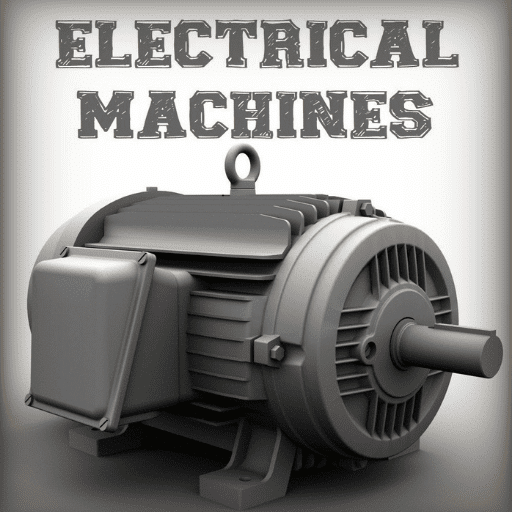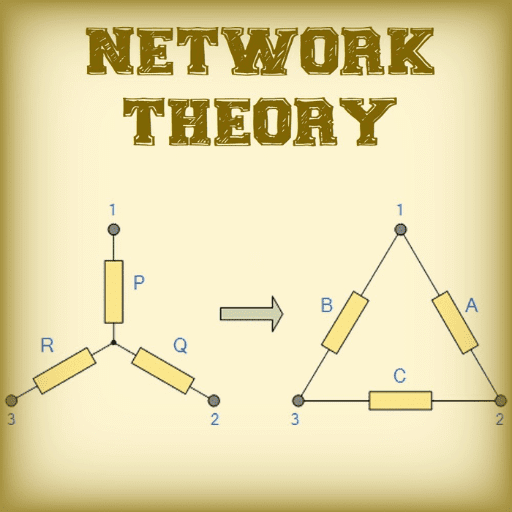Determination of Circuit Parameters | Electrical Machines - Electrical Engineering (EE) PDF Download
Determination of Circuit Parameters
In order to find values for the various elements of the equivalent circuit, tests must be conducted on a particular machine, which is to be represented by the equivalent circuit. In order to do this, we note the following.
1. When the machine is run on no-load, there is very little torque developed by it. In an ideal case where there is no mechanical losses, there is no mechanical power deveoped at no-load. Recalling the explanations in the section on torque production, the flow of current in the rotor is indicative of the torque that is produced. If no torque is produced, one may conclude that no current would be flowing in the rotor either.
The rotor branch acts like an open circuit. This conclusion may also be reached by reasoning that when there is no load, an ideal machine will run up to its synchronous speed where the slip is zero resulting in an infinite impedance in the rotor branch.
2. When the machine is prevented from rotation, and supply is given, the slip remains at unity. The elements representing the magnetizing branch Rm & Xm are high impedances much larger than Rr′ & Xl′r in series. Thus, in the exact equivalent circuit of the induction machine, the magnetizing branch may be neglected.
From these considerations, we may reduce the induction machine exact equivalent circuit of fig.18 to those shown in fig. 21.
(a) No-load equivalent (b) Blocked rotor equivalent
Figure 21: Reduced equivalent circuits
These two observations and the reduced equivalent circuits are used as the basis for the two most commonly used tests to find out the equivalent circuit parameters — the blocked rotor test and no load test. They are also referred to as the short circuit test and open circuit test respectively in conceptual analogy to the transformer.
The no-load test
The behaviour of the machine may be judged from the equivalent circuit of fig. 21(a). The current drawn by the machine causes a stator-impedance drop and the balance voltage is applied across the magnetizing branch. However, since the magnetizing branch impedance is large, the current drawn is small and hence the stator impedance drop is small compared to the applied voltage (rated value). This drop and the power dissipated in the stator resistance are therefore neglected and the total power drawn is assumed to be consumed entirely as core loss. This can also be seen from the approximate equivalent circuit, the use of which is justified by the foregoing arguments. This test therefore enables us to compute the resistance and inductance of the magnetizing branch in the following manner.
Let applied voltage = Vs. Then current drawn is given by
(9)
The power drawn is given by
(10)
Vs, Is and Ps are measured with appropriate meters. With Rm known from eqn. 10, Xm can be found from eqn. 9. The current drawn is at low power factor and hence a suitable wattmeter should be used.
Blocked-rotor Test
In this test the rotor is prevented from rotation by mechanical means and hence the name.
Since there is no rotation, slip of operation is unity, s = 1. The equivalent circuit valid under these conditions is shown in fig. 21(b). Since the current drawn is decided by the resistance and leakage impedances alone, the magnitude can be very high when rated voltage is applied.
Therefore in this test, only small voltages are applied — just enough to cause rated current to flow. While the current magnitude depends on the resistance and the reactance, the power drawn depends on the resistances.
The parameters may then be determined as follows. The source current and power drawn may be written as
In the test Vs, Is and Ps are measured with appropriate meters. Equation 12 enables us to compute(Rs + Rr′ ). Once this is known, (Xs + Xr′ ) may be computed from the eqn. 11.
Note that this test only enables us to determine the series combination of the resistance and the reactance only and not the individual values. Generally, the individual values are assumed to be equal; the assumption Rs = Rr′ , and Xs = Xr′ suffices for most purposes. In practice, there are differences. If more accurate estimates are required IEEE guidelines may be followed which depend on the size of the machine.
Note that these two tests determine the equivalent circuit parameters in a ‘Stator-referred’ sense, i.e., the rotor resistance and leakage inductance are not the actual values but what they ’appear to be’ when looked at from the stator. This is sufficient for most purposes as interconnections to the external world are generally done at the stator terminals.
|
19 videos|95 docs|25 tests
|
FAQs on Determination of Circuit Parameters - Electrical Machines - Electrical Engineering (EE)
| 1. What are the main parameters that need to be determined in circuit analysis? |  |
| 2. How can resistance be determined in a circuit? |  |
| 3. What is the significance of determining capacitance in a circuit? |  |
| 4. How can inductance be determined in a circuit? |  |
| 5. How to determine the voltage and current in a circuit? |  |






























